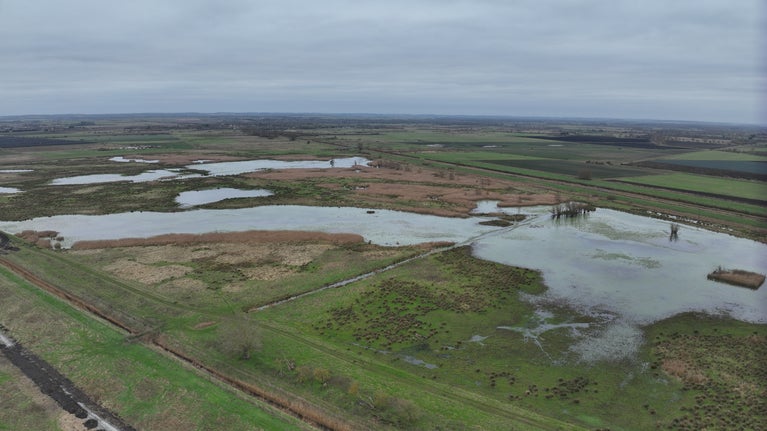Peatlands are among the UK’s most valuable ecosystems for biodiversity and climate resilience. Yet over 80% of lowland peatlands are degraded, meaning that, instead of storing carbon, they are emitting around 23 million tonnes a year into the atmosphere. Most of those emissions are coming from peat in the lowlands, even though lowland peat represents just 16% of peatland types.
The Living Lowlands programme is a new £3 million initiative to restore these vital landscapes. Launched thanks to a founding donation from The Nature Recovery Project, Living Lowlands will work with nature, communities, and research partners to secure a better future for people and wildlife.
The Living Lowlands project
The Living Lowlands project is a multi-site, landscape-scale programme focused on restoring lowland peat across England. It combines peatland restoration, nature-rich water management, sustainable farming and innovative research, to address the challenges faced by our country’s iconic lowland landscapes.
The project is designed to be scalable and replicable, with learnings from key sites, like Wicken Fen, informing a national approach to lowland recovery.
Making water work for peat
Lowland peatlands are formed and protected by water, but they’re also vulnerable to its extremes. Centuries of drainage have dried out peat soils, causing them to degrade and release carbon. At the same time, climate change is bringing more intense rainfall and flooding, overwhelming existing drainage systems.
This paradox - too much water in the wrong places, and not enough where it’s needed - is one of the biggest challenges for lowland landscapes today, and one which Living Lowlands will explore in addressing.
How does this affect Wicken?
Wicken Fen, one of the UK’s oldest nature reserves, sits at the heart of this challenge. Its surrounding peatlands are drying out, threatening its rich biodiversity, carbon storage, and water quality. Without intervention, this precious landscape is at risk.
But Wicken also offers a unique opportunity: with the right investment, it can become a national model for lowland peat restoration, sustainable water management, and farming.
Work at Wicken
Wicken is a flagship site for the Living Lowlands programme. Here, we’re piloting a suite of interventions that will:
Lowland landscape recovery at Wicken
1. Lowland peat restoration:
We’re halting damaging land use and rewetting peat soils to lock in carbon and support nature. This includes restoring key parcels of peatland and using balanced grazing with Koniks (small horses) and Highland cattle.
2. Nature-rich reservoir:
A new reservoir will be created to manage water more sustainably across the landscape. This will help regulate flooding, improve water quality, and provide habitat for species like otters, bitterns, and dragonflies. It will also reduce pressure on the demand for water in a drought-prone region.
3. Paludiculture research:
Funding will also launch a new initiative that looks at scaling up paludiculture, the practice of farming on wet peat, to farm scale. This will explore how crops like reeds and sedges can be grown in ways that support both livelihoods and landscape recovery.


